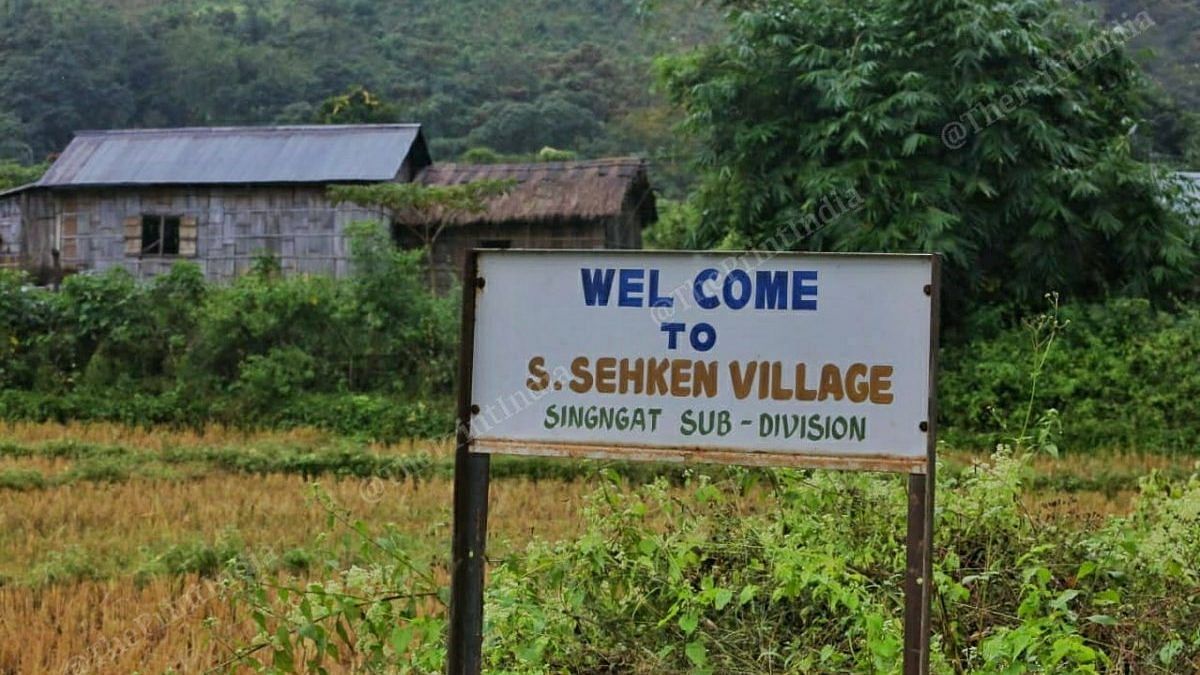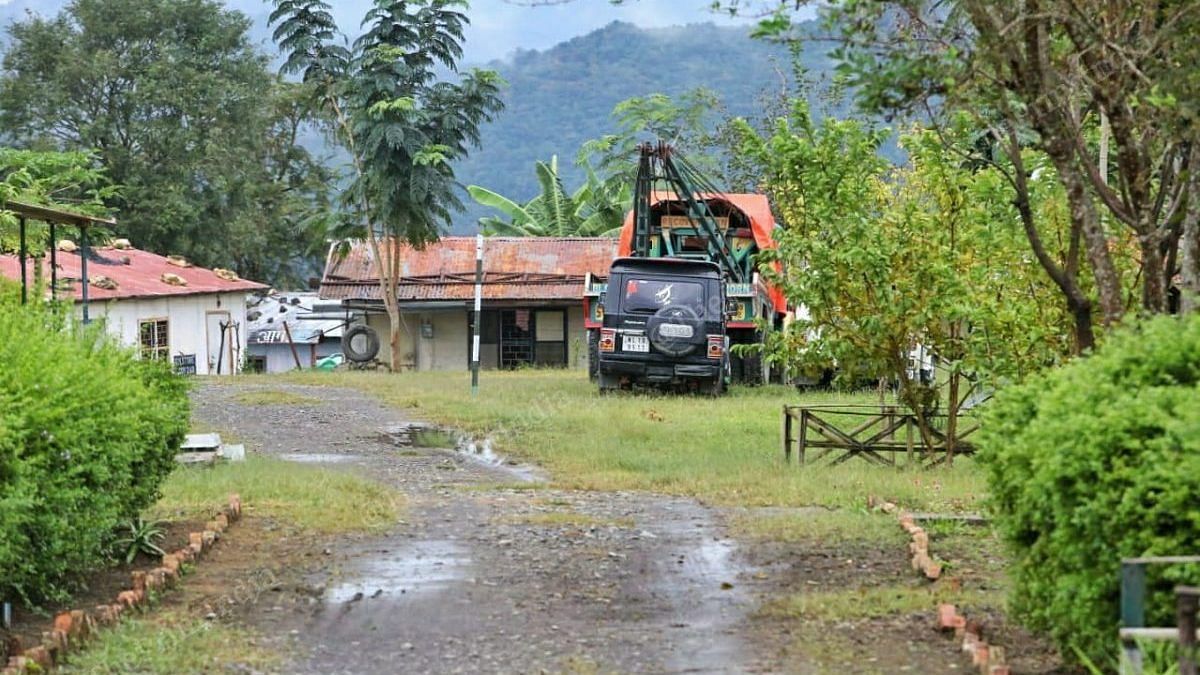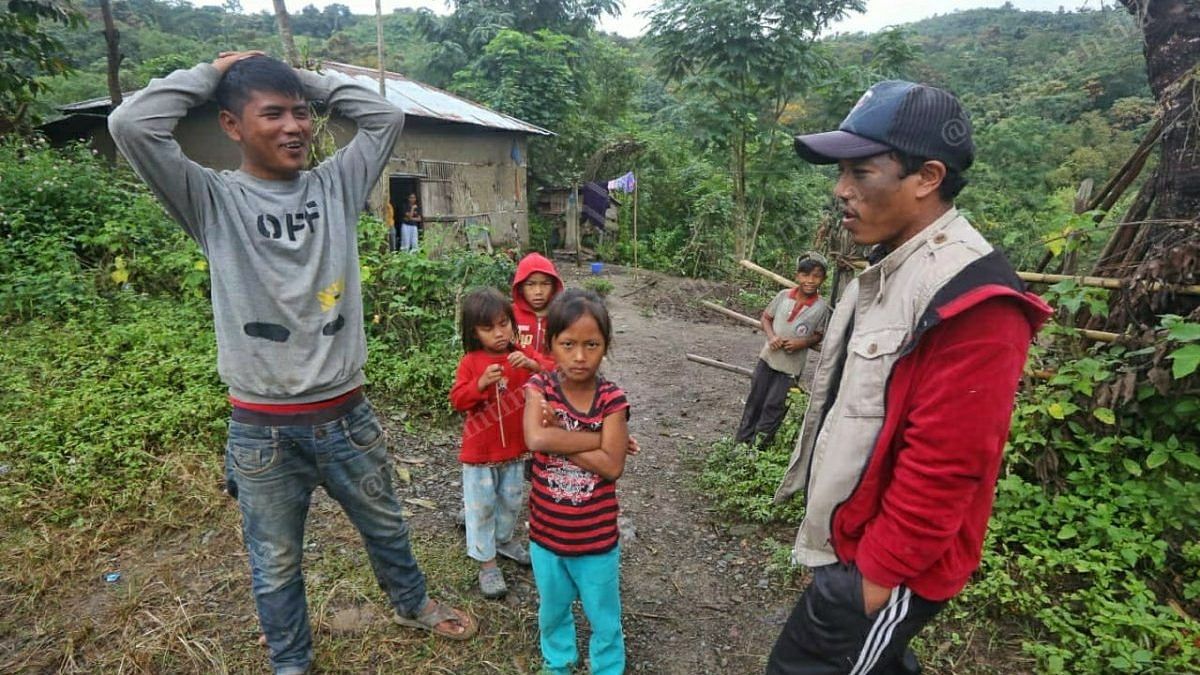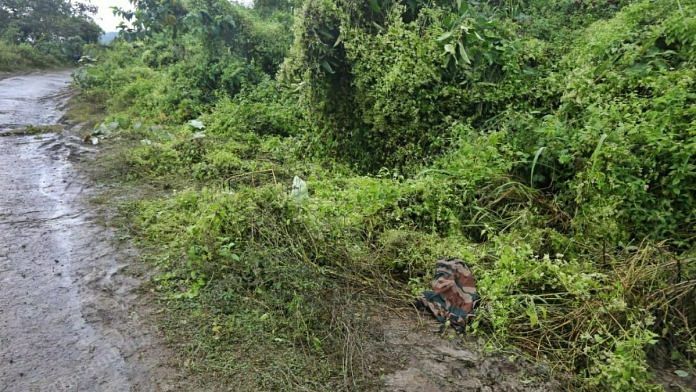Churachandpur: A “textbook perfect” ambush site, bad weather conditions and a challenging evacuation mission — this is what marked the ambush that led to the tragic killing of seven people, including 46 Assam Rifles Commanding Officer Viplav Tripathi, his wife, son and four other soldiers, ThePrint has learnt.
ThePrint visited the remote spot located on Tedim Road between S Sehken Village and the Behiang Border Post, which is some 55 km from the district headquarters in Churachandpur but takes nearly four-and-a-half hours to reach due to poor road conditions. The road is about 10 feet in width and is surrounded by a thicket of trees.
The attack took place at 10:30 am on 13 November. It resulted in the deaths of the colonel, his wife Anuja Tripathi, eight-year-old son Abeer Tripathi as well as soldiers — Rifleman (Rfn) Suman Swargiary, Rfn Khatnei Konyak, Rfn R.P. Meena and Rfn Shyamal Das.
The People’s Liberation Army (PLA) and the Manipur Naga People’s Front (MNPF) had claimed responsibility for the attack in a statement that was released on the day of the attack.

The sequence of events
Police and military sources told ThePrint that Colonel Viplav Tripathi and his family had left for a visit to Behiang a day earlier on Friday, from the battalion headquarters at Khuga. According to an Assam Rifles source, he is likely to have been visiting the post as a part of the routine rounds to track the company periodically and meet officers. It is unclear as to why he was accompanied by his wife and son.
On the way, the company briefly stopped at the 46 Assam Rifles camp at Bualkot at around 3 pm — located about 12 km from Behiang. Here the colonel had a short interaction with the personnel, before proceeding to the destination.
The convoy, consisting of four cars including a black Bolero in which Tripathi and his family were travelling in, reached Behiang that evening.

A source in the Manipur Police said Tripathi had stayed back in Behiang and his convoy was ambushed the next morning, as they were returning to the battalion headquarters.
The ambush took place at the spot where the road curves — a “textbook perfect” spot for an ambush, the source added.
It was the IED blast, which first stopped the convoy after it impacted the pilot car — a Gypsy. At the spot where the blast occurred, the hill had hollowed out. According to the source, the driver is likely to have been targeted first, in order to stop the convoy.
Villagers at the nearby S. Sehken village told ThePrint that the shooting itself lasted for just a few minutes. Mangboi Zou, who had been working at a paddy field near the village, heard an explosion at around 10:30 am. “There were three bombs back to back and then we heard the gun sounds,” he said.

The Assam Rifles source added that the militants must have been in hiding, at a close range of 15 to 20 yards when the ambush took place.
According to the source, the Colonel is likely to have been seated in the front seat of the vehicle, while his family was at the back. This, the source said, means that the militants would have been aware of the family being present in the car since the militants themselves were at a close distance.
ThePrint had earlier reported that a Quick Reaction Team (QRT) had also been a part of the convoy, and an exchange of gunfire did take place. Rounds were also found at the site, to confirm the same.
Only one vehicle in the convoy wasn’t hit as it was trailing behind. The militants were likely to have “gone back from the eastern side of the hill”, which is 15 to 20 km from the international border — where the PLA and MNPF camps are believed to be located.
Opposite the spot where the blast had taken place, a very narrow path opens up in the thicket of trees and grass.
The statement released by the two proscribed groups included pictures of 30 cadres brandishing Kalashnikov rifles who had carried out the attack.
Six people were injured in the incident, of whom four are in critical condition and are being treated at the Shija Hospital in Imphal.
Also read: CM, Assam Rifles, families pay tribute to those killed in Manipur ambush at Imphal airport
A challenging evacuation
The treacherous landscape, bad road conditions and rainy weather posed challenges in the evacuation operation. The injured and bodies of the deceased from the site could only be evacuated by 1 pm — over three hours from the time of the incident.
This is despite a helicopter taking off at 11.30 am itself, soon after the incident had occurred.
According to the Assam Rifles source, the weather was bad and it had been raining continuously as a result of which the helicopter landed with utmost difficulty. Initially, three of the six who had been injured where directly brought to Imphal, given their critical condition. Later, the helicopter was used to evacuate the remaining three injured personnel.
Meanwhile, the rest of the bodies were brought back via road and reached the Churachandpur headquarters, the source quoted above added.
Interestingly, according to police sources, while the PLA and United National Liberation Front (UNLF) had been known to be present in the areas, this was the first time that the MNPF had been behind such an attack here.
(Edited by Arun Prashanth)
Also read: PLA & MNPF — Militant groups behind ‘well-planned’ ambush that killed CO, family in Manipur




